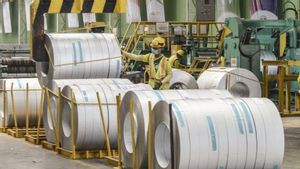YOGYAKARTA - Indonesia is experiencing deindustrialization. We observe that the contribution of manufacturing output to gross domestic products continues to fall, from 28% in 2008 to only 17% in 2019. Chart above shows you how severe the shrinkage is. Curious what is deindustrialization?
The turning point is throughout the 1998 crisis, where after that, the percentage continued to fall. What is deindustrialization? How does it go? What are the consequences for the economy and society? Let's review them one by one.
What is deindustrialization (deindustrialization) is a phenomenon in which an economy grows from manufacturing-based to service-based. In other words, the economy transitions from relying on the secondary zone to the tertiary zone. However, what is worse is when the economy transitions back to the primary zone (in contrast to industrialization).
How can we observe this transition? At first, we can see it from information on gross domestic products (GDP) sourced in zones. It details the economic structure of a country. In it, GDP information is broken down into part of the zone sourced from their final output monetary value.
After that, we divided the output value of the manufacturing zone against GDP. When deindustrialization is established, the manufacturing zone no longer contributes dominantly to the economy. The percentage of its output to GDP displays a decline.
The next result is employment. Work in the manufacturing zone contributes to shrinking in absorbing new labor. The creation of new jobs in this zone is less fast than the service zone. Thus, the manufacturing zone no longer dominates in absorbing labor in an economy.
What causes deindustrialization?
Some of the reasons why deindustrialization occurs. We can see it as a natural phenomenon but also as a phenomenon due to structural economic problems.
What is the impact of deindustrialization
Deindustrialization has a positive and negative impact on the economy and citizens. It affects job opportunities, residents' income, and areas.
Here are the positive consequences:
More income. The transition from the manufacturing zone to the service zone reflects greater welfare and income. Not only that, the service zone also has a greater added value for the economy. The shift in the economic structure is in conclusion towards a larger standard of living.
Productivity is greater. Because creating more added value, output per worker also increases.
The decline in area degradation. Manufacturing businesses produce substantial carbon emissions, which interfere with areas. The reduced manufacturing activity means reduced due to negativity to the environment.
More cheap objects. Trading specialists are headed for cheaper objects. For example, global industries based in developed countries have increased profits by transferring creation to low-cost positions in other countries. In conclusion, they export their products back to their home countries more cheaply.
Fewer jobs are risky. Working in factories often leads to disasters and causes life defects.
On the other hand, deindustrialization also causes negative effects, such as:
VOIR éGALEMENT:
So after knowing what dedustrialization is, see other interesting news on VOI, it's time to revolutionize news!
The English, Chinese, Japanese, Arabic, and French versions are automatically generated by the AI. So there may still be inaccuracies in translating, please always see Indonesian as our main language. (system supported by DigitalSiber.id)
















